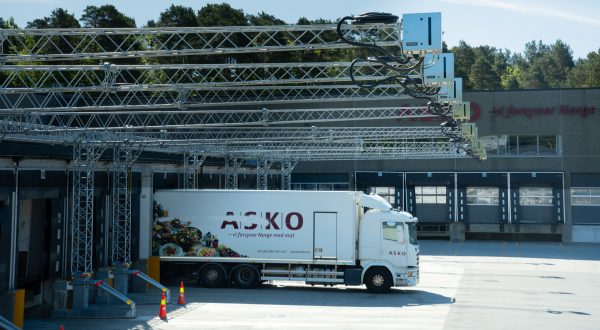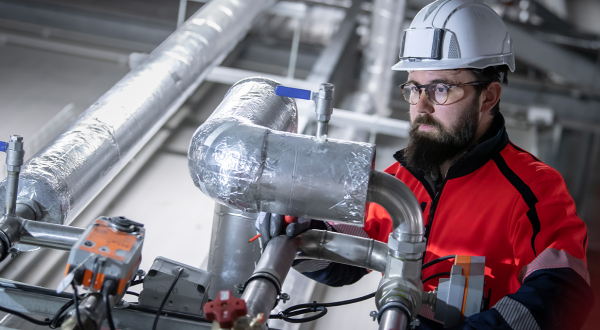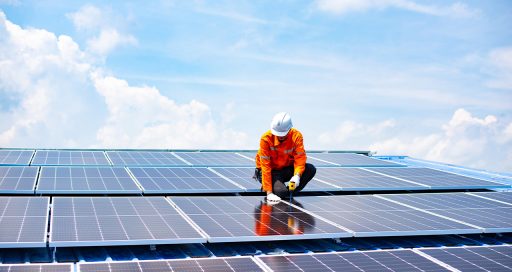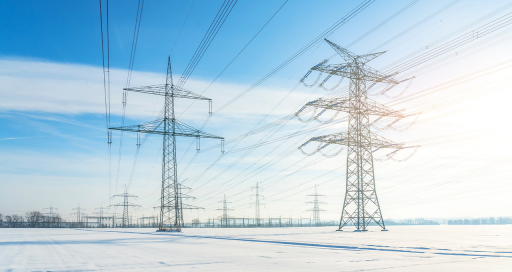Nordic countries lead the way to zero-emissions construction sites
Reading time: 6 min
In Norway, Sweden and Finland, Omexom is increasing the number of its construction sites using 100% electric vehicles and machinery. The benefits include fewer CO2 emissions and reduced noise pollution.
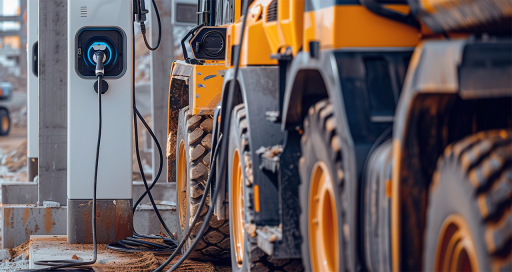
In the Nordic countries, the reduction of greenhouse gas emissions has entered a highly active phase. VINCI Energies has taken a strong lead regionally in the development of ecological and sustainable construction sites. As Kim Okfors, Innovation and Environment Manager at VINCI Energies in the Nordic countries, explains: “The electrification of our vehicle fleets and construction machinery reflects the underlying trend in the Nordic countries, particularly Norway and Sweden, where equipment electrification rates are 20% and 29% respectively. But some of our business units can already boast far higher rates.” A similar trend can be seen in Germany (see “Pilot project in Germany” below).
Examples include the electric tramway project at the Aitik copper mine operated by the metals company Boliden in northern Sweden, led since 2018 by Omexom, the VINCI Energies energy infrastructure brand. But a number of recent projects also serve to highlight the contribution VINCI Energies is making to construction-site electrification.
Synergies
In April 2023, Omexom E-Mobility delivered complete charging infrastructure for a total of 76 buses to Nobina, the public transport operator in Oslo, Norway, in its Mortensrud depot. This project, which included the design and construction of 5 MW substations was organised “As an almost emissions-free sustainable worksite,” says Kim Okfors. “All the vehicles used for transport of personnel to site (fitters, engineers, project managers) was electric”.
“The electrification of vehicle fleets and construction machinery is an underlying trend in the Nordic countries”
Ansgar-Johan Ladstein, Business Unit Manager at Omexom HV Power Systems Oslo, highlights the synergies created within the Omexom network: “Four business units worked on this project to ensure full handover to the customer within the deadlines. We carried out all the project work from A to Z, including the 24 kV high-voltage system and the 76 160–240 kW DC chargers, as well as the construction work itself, the lighting systems and temporary electrical supply.”
Extending zero emissions
A few months later, on behalf of the Swedish electricity distributor Ellevio, Omexom, in partnership with VOLVO CE, completed another project in central Stockholm – the construction of charging stations for electric cars in the Kungsholmen district – more modest in scale, but with equally ambitious aims in terms of reducing greenhouse gas emissions.
“Apart from one suction excavator, which was not available in an electric version, all the machinery and all vehicles and tools used on the site were electric,” says Kim Okfors. The result was a 2.3-tonne reduction in CO2 emissions over the six-week works period. To say nothing of the technical complexity of the operations: Ali Yuusuf Abdullahi, the project manager from Omexom Stockholm E-Mobility, notes “The machines’ high performance, even in extremely cold -17 °C conditions.”
This more environmentally friendly approach has since been adopted with other contracts, such as the one Omexom Oslo Lighting is currently engaged in for the maintenance of some 30,000 public light fixtures in Oslo. Since the first quarter of 2024, Omexom has been using only 100% electric vehicles and machines in their work on this contract. Two more zero-emissions projects (substation installations) are currently in the design phase in Sweden and Finland.
Pilot project in Germany
In Bönnigheim, in southwestern Germany, an innovative pilot project is helping to usher in the age of fully electric construction vehicles and machinery.
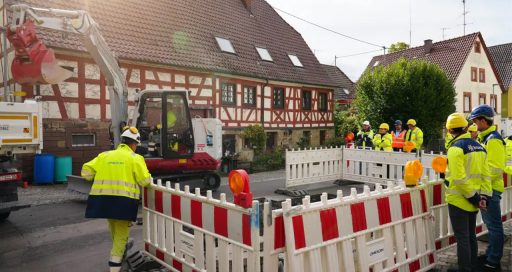
In Bönnigheim, a small town in the Ludwigsburg area of southwestern Germany, a pilot project has been trialling fully electric construction vehicles and machinery, in collaboration with Omexom GA Süd GmbH. The site is one of the “NETZ worksites of the future”, a series of innovative projects by Netze BW GmbH, an electrical distribution network operator, whose aim is to make construction sites more environmentally friendly and more sustainable.
“The project began in late September 2024 and was completed in October,” says Ralf Langer, Head of the Middle Neckar Nord and Pipeline Construction Division at Omexom GA Süd. “For Omexom, this was civil engineering work, including the installation of a primary cable and domestic connection, which required directional drilling.*”
Solar-powered break room
In order to minimise CO2 emissions and noise, only electric construction plant was used on this site. “We used a Suncar excavator, a Renault truck, an Opel service vehicle, and a Terra drilling rig,” says Ralf Langer. “We also used smaller electric tools, including a plate compactor, a cutter, a piledriver, a rammer, and a battery pack.”
All-electric all the way with a solar-powered trailer as the break room
The all-electric principle was taken to the extreme with the installation of a solar-powered trailer as a break room for the teams, who were able to run their laptops and coffee machines on self-generated power.
This project is intended to serve as an exemplary innovative solution in environmental terms, but also for its benefits to local residents, whose day-to-day lives are undisturbed, thanks to the silent construction equipment in use. Omexom hopes to develop this type of all-electric worksite and sustainably revolutionise construction practices. “Some of the equipment we used has proven extremely effective,” concludes Ralf Langer, “while some is still being refined.”
*Directional drilling is an installation technique for ducts and cables, which removes the need to dig trenches.
06/16/2025
